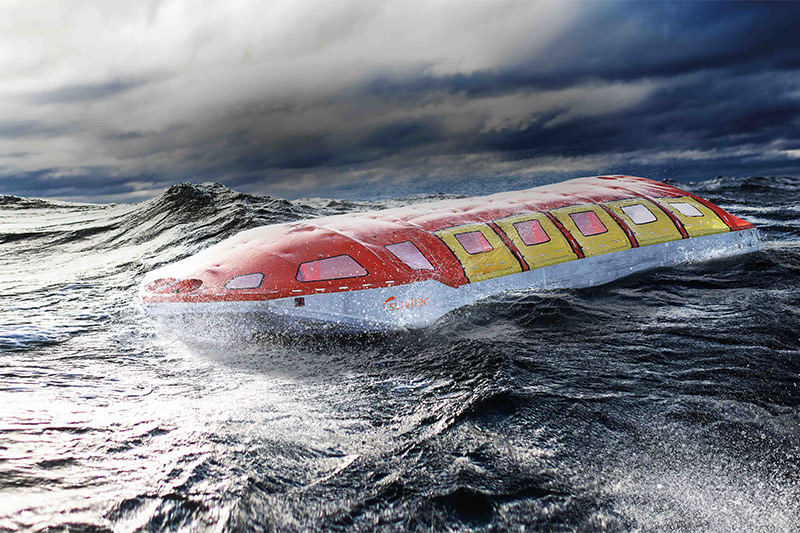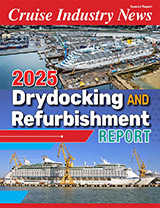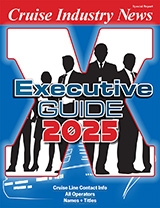Survitec announced in a press release that it has received independent validation for its Seahaven system, the world’s largest inflatable lifeboat.
The study, conducted by the naval architecture and marine engineering consultancy, Foreship, confirms the system’s potential to enhance cruise ship safety, vessel design and operational efficiency.
The study evaluates the benefits of integrating Seahaven into cruise ship designs, with a focus on space utilization and cost efficiency. It highlights that Seahaven offers weight advantages, making it a viable option for new ship designs and retrofitting existing vessels.
According to Survitec’s white paper, Seahaven Application Study, the findings reveal that Seahaven optimises deck space by eliminating traditional bulky lifeboats, which enhances ship layout and functionality. The system’s compact design reduces both vertical and longitudinal space requirements, improving bridge visibility and reducing vessel overhang.
Claude Sada, chief operating officer at Survitec, said: “Beyond delivering safety performance, Seahaven enables shipowners to optimise their fleets with improved design flexibility, greater operational efficiencies and enhanced commercial potential.”
Seahaven’s reduced weight compared to traditional lifeboat configurations provides flexibility in ship design, potentially lowering construction costs for new vessels and improving stability for retrofitted ones. This flexibility also allows operators to repurpose space for additional passenger cabins, public areas, or leisure and entertainment facilities, increasing revenue potential.
The study also includes a capacity analysis, confirming that Seahaven aligns well with various vessel sizes and meets SOLAS (Safety of Life at Sea) requirements. For medium-sized cruise ships, the system integrates without significant deployment issues. Seahaven’s design accommodates SOLAS deployment characteristics, including the 20-degree heel requirement.
As an automated evacuation system, Seahaven can evacuate up to 1,060 passengers in under 22 minutes, eliminating the need for traditional davit and release-hook systems. This helps reduce maintenance costs and crew training requirements while ensuring SOLAS compliance. The company stated that Seahaven has undergone heavy-weather sea trials, demonstrating reliable operation in conditions exceeding Beaufort Scale 6.
The analysis confirms Seahaven’s adaptability across various deployment configurations, including hybrid solutions with Marine Evacuation Systems (MES) and tender lifeboats, making it a versatile LSA solution for cruise lines aiming to future-proof their fleets.
“Since achieving Lloyd’s Register type approval in 2022, Seahaven has set new benchmarks for maritime safety and vessel optimisation. As the industry continues to prioritize regulatory compliance and passenger experience, adopting Seahaven represents a forward-thinking investment in the future of maritime evacuation systems,” added Sada.




